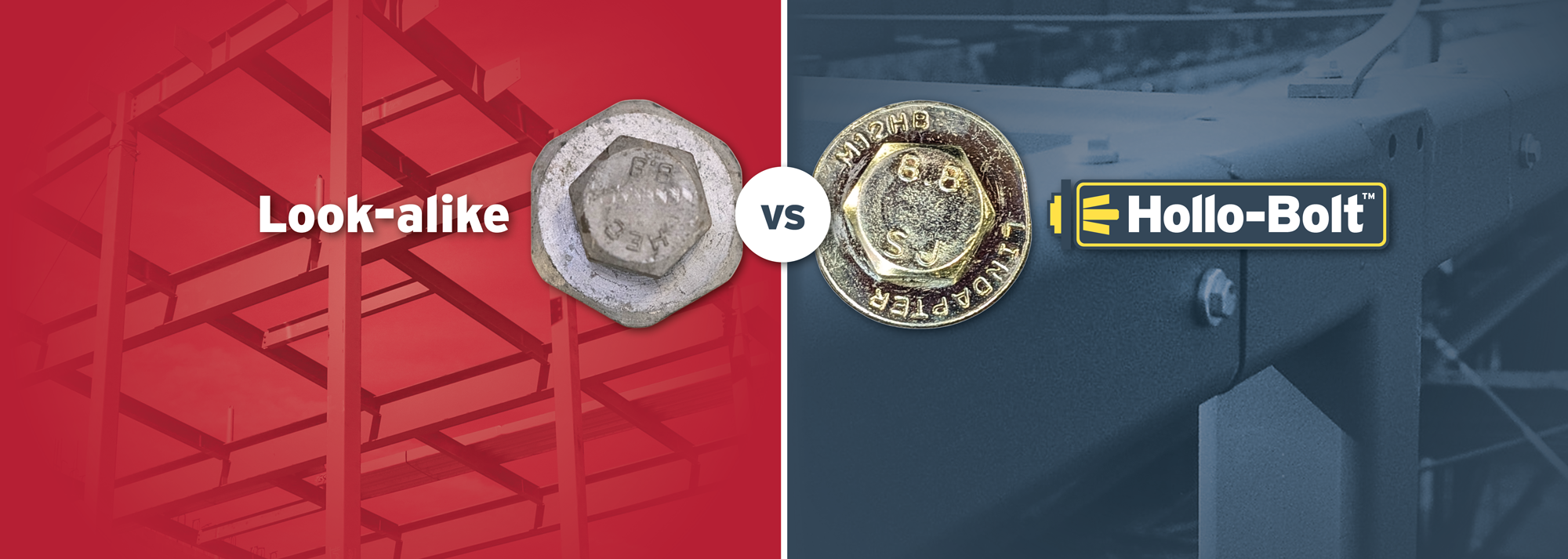Why structural engineers are turning to Hollo-Bolts to connect steel Structural Hollow Sections
11-04-2024
Connecting to steel Structural Hollow Sections (SHS) from a single side has posed a challenge for engineers over the years. However, there are now numerous types of fasteners and connection methods available for this increasingly popular structural material, aside from welding. This article will explore the benefits and drawbacks of some of these SHS connection methods and compare them against Lindapter’s alternative solution, the Hollo-Bolt®, an expansion bolt that requires access to only one side of the SHS.
When designers opt to use SHS for its bi-axial capacity or visually appealing symmetric shapes, the question arises of how to attach another structural member to it. While welding or bolting has traditionally been preferred for structural shapes due to their ability to handle high loads, restrictions in welding or high labour costs have led engineers to explore mechanical fasteners.
Fortunately, global design guides published by renowned institutions such as the British Constructional Steelwork Association (BCSA), Steel Construction Institute (SCI), and others provide assistance with the design of SHS connections. These guides describe various mechanical fasteners suitable for SHS connections, including:
**Common Mechanical Fasteners**
Through-Bolts are commonly used but are limited by the flexibility of SHS walls, making pre-tensioned fasteners difficult to use without additional fabrication work.
Threaded Studs can be used on SHS faces but require heavy equipment and may need counter-bored holes to clear collars.
Blind Threaded Inserts are available but have limitations due to material grip and may require significant effort for installation.
Blind Rivets are suitable for limited access situations but are only available in small diameters and for light loads.
**Lindapter – the pioneer of Expansion Bolts for Structural Steel**
**Introduction to Expansion Bolts**
Expansion bolts are mechanical fasteners consisting of a bolt, expansion sleeve, and cone-shaped nut. Lindapter pioneered expansion bolt developments, with one of the first widely available fasteners being the Lindibolt®, launched in 1948. The Lindibolt® was designed to provide a threaded stud protruding from the SHS, serving as an attachment point for lifting equipment during marine salvage operations.
**Modern Day Hollo-Bolt**
Hollo-Bolts are expansion bolts designed to satisfy the needs of steelwork contractors in terms of ease and speed of installation. Developed from Lindapter's decades of experience, Hollo-Bolts offer robustness and aesthetic appeal, making them suitable for various applications. They are available in different materials and finishes, catering to diverse environments.
**Research & Development**
Continuous development has led to improvements in Hollo-Bolt designs, including flush fit head variants and enhanced clamping force mechanisms.
**Hollo-Bolt Installation**
Installing Hollo-Bolts requires basic tools and involves pre-drilling oversized holes in the steel. The bolts can then be inserted and tightened with a torque wrench, providing a secure connection.
**Designing with Hollo-Bolts and Approvals**
Hollo-Bolts are proprietary products, and designers must refer to Lindapter catalogues for specific strength information. They have been independently verified and approved by various bodies, including TUV in Europe and the International Code Council Evaluation Service (ICC-ES) in North America.
In summary, Hollo-Bolts offer a reliable and efficient alternative for making structural connections to SHS. With their high load capacity and easy installation, they are ideal for construction projects requiring speed and flexibility.






